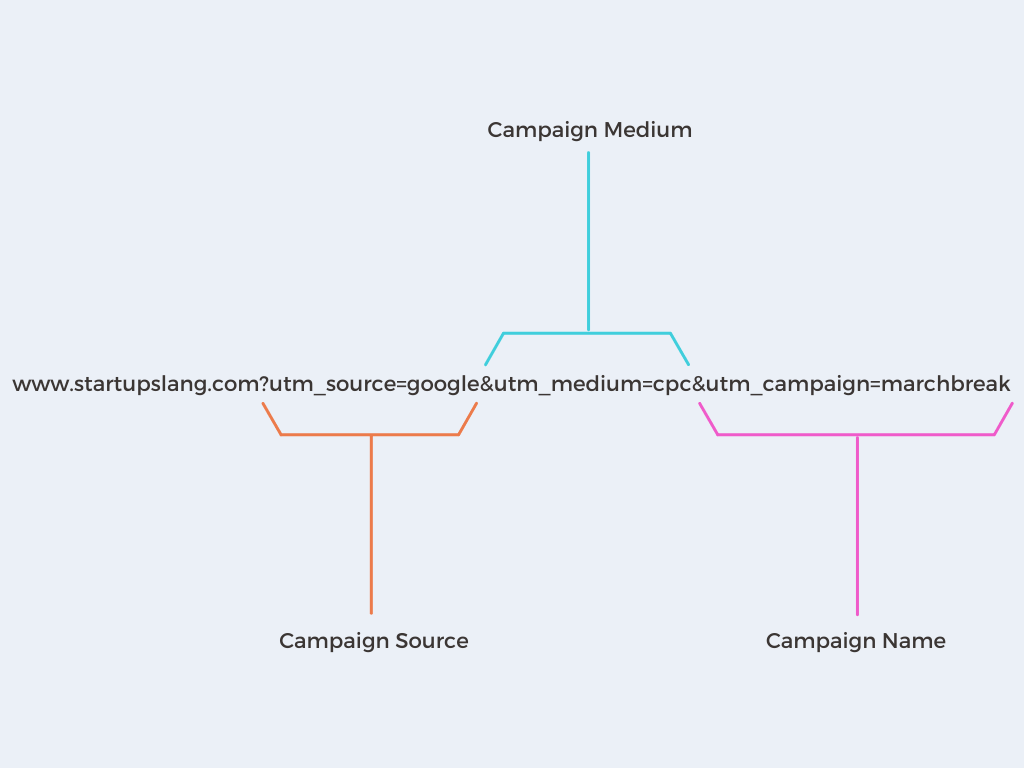A key consideration for any business is how your customers find you. Knowing this helps you discover how to bring in new business. Marketing attribution is one of the ways ecommerce businesses can better understand how customers find them.
Marketing attribution focuses on the different marketing channels a company uses to attract clients and attributes a different value to each of them.
In this article, I’ll explain the benefits of marketing attribution in ecommerce, the different types, models, and metrics to consider, and how to get started tracking where your customers come from.
Jump to:
- What Is Marketing Attribution?
- Benefits Of Marketing Attribution
- Marketing Attribution In The Digital Age
- Marketing Attribution Models
- What Model Is Best For Me?
- How To Start Tracking Marketing Attribution
What Is Marketing Attribution?
Simply put, marketing attribution is the term used to describe the process of discovering which marketing strategies are working best for your business.
As I’ll explain, there are a number of different attribution models used by ecommerce marketing teams and consultants.
Each varies in complexity and accuracy, ranging from simple first/last touch to more multi-touch attribution models such as linear attribution.
What Are The Benefits Of Marketing Attribution For Ecommerce Businesses?
In a digital business, using different digital marketing channels is a key to success. At the same time, the options for online advertising and marketing are nearly endless.
Knowing which channels are playing the biggest role in your customer journey can help you determine where to spend or do more and is crucial to success in an increasingly competitive space.
Attribution data can be used to double down on things that are working and to optimize things that aren’t. Better yet, tracking the customer journey in this way can help you gain a better understanding of your customers.
You can use this information to get a clearer understanding of customer behavior and better identify your user personas.
Marketing Attribution In The Digital Age
In the world of ecommerce, it’s difficult to determine what’s driving your customers. There are multiple touchpoints along the sales cycle, making finding out what’s working even harder.
Your business may be running ads on Google and Facebook, optimizing for SEO, and running an affiliate marketing program. What’s more, customers are accessing these from different devices at different times of the day.
Here’s an example to help explain.
Michael is interested in buying a new pair of headphones. He does a quick Google search on his phone on his commute to work. He clicks on the top result for headphones which is a Google Search ad that takes him to the Bose website.
Later, once he’s at his desk, he searches Google for the “best Bose headphones” and clicks on a well-ranking organic result for a blog. The blog takes him to the Bose website.
Once on the website, he opts into emails after a pop-up promises him 10% off. A few hours later, on his lunch break, he gets served a display ad on Facebook as he scrolls through his feed and clicks through to get more information.
Later that night, on his home computer, he gets an email for a discount on the headphones and buys them.
Which of these marketing mix touchpoints encouraged Michael to buy the headphones?
The more touchpoints a customer has with a brand, the more difficult it becomes to figure out the marketing source attribution for sales.
So how do you accurately determine which aspects of your marketing strategy are working best for you?
Exploring Marketing Attribution Models
A marketing attribution model is an approach to understanding attribution in marketing. It’s how you assign value to the different marketing tools or campaigns.
Using the model of your choice, you can opt to assign value for sales and conversions for one or several touchpoints.
Each type of attribution has pros and cons, so be sure to understand which one suits your business best before deciding.
I’ll now review the most common models, categorized by single-touch and multi-touch.
Single-touch attribution models
As the name suggests, these only take into account one marketing touchpoint along the customer journey.
First-click attribution
First-click (or first-touch attribution) credits the entire sale or conversion to the first touchpoint.
In the headphones example above, 100% of the credit would be assigned to the Google search ad that initially brought Michael to the Bose website.
The advantage of this model is its simplicity, but it overlooks the other touchpoints that may have led to the eventual purchase.
Last-click attribution
Last-click attribution (or last-touch attribution) assigns the sale to the last click the customer made before purchasing. In the example above, this means the sale would have been attributed to the email campaign.
This is a great way to measure marketing attribution when there is a short buying cycle, but it doesn’t provide insight into the success of top or mid-funnel marketing campaigns or efforts.
As a result, this is not considered a valuable attribution model.
Last non-direct click attribution
This model is like the last click one above, but with the important difference of ignoring any direct traffic.
For instance, Michael could have gone directly to the Bose website to buy his headphones after engaging with various marketing channels.
In a traditional last-touch model, his conversion would be attributed to direct traffic. In this model, email is credited instead with his conversion.
Like the pros and cons of last touch, this model is simple but overlooks the top and middle of the marketing funnel.
Multi-touch attribution models
In these models, attribution is awarded to multiple touchpoints depending on the parameters of the model.
Linear attribution model
A linear model considers each marketing touchpoint as having played an equal role in the conversion.
No stage of the marketing funnel is overlooked, but this model can overestimate the importance of other touchpoints that have had an impact on the buyer.
For instance, if, in the example above, Michael spent only a few seconds on the Bose website after clicking the ad on social, was this really a key part of his buying journey?
Moreover, this model is particularly unhelpful when looking to limit marketing spend since it assigns value to every touchpoint.
Positional attribution model
The positional, or U-shaped, model awards 40% of the credit to the first and last touchpoints equally. The remaining 20% is attributed to each of the remaining touchpoints equally.
This model does still undervalue those middle-of-funnel touchpoints but doesn’t ignore them and can be a great model for most ecommerce businesses.
Time-decay model
The time-decay model attributes the most value to the last touchpoint and distributes the rest of the value amongst all the remaining touchpoints. The further away from the time of purchase a touchpoint is, the lesser value is attributed to it.
This is a popular option since it awards value to the entire marketing funnel, but it does undervalue the first touchpoint.
In Michael’s case, if he had not seen the ad that directed him to Bose, would he have bought the same pair of headphones? In many cases, the answer is no, and so a time-decay attribution model is not entirely accurate.
Paid-only model
Paid-only is really a variation of the linear attribution model, with the key difference being it only looks at paid marketing efforts.
The advantage of this model is that it allows businesses to look at their spend and focus on how to attribute their marketing budget.
But it ignores the importance of free marketing—like organic search—which is important if your goal is strictly to manage the books. Therefore, paid-only is insufficient if you are hoping to learn more about the overall buyer journey.
Custom attribution model
Sometimes called the data-driven or algorithmic model, a custom attribution model looks at the buyer journey for your clients and determines which touchpoints had the greatest impact on the buyer.
To get started with a custom attribution model, you’ll need some big data on your customers and their buying journeys. This is a complicated method to set up that may not be worth the investment of time and money, depending on your business, but it is undisputedly the most accurate.
What Attribution Model Is Best For Me?
There’s no perfect marketing attribution model since it’s impossible to really know what drove a customer to make a purchase.
For instance, marketing attribution models all ignore offline sources that can still have value, even in today’s digital age.
That said, tracking your marketing efforts and attributing sales is still an important part of any ecommerce business. It is a great way to ensure you’re spending your money and your time effectively.
How does Google Ads attribute sales?
Google Ads can only track traffic to your ads using cookies that typically last 30 days, though you can customize your settings. It doesn’t track other touchpoints users have made on the buyer journey. These conversions may also be duplicates from ones you see attributed in other tracking platforms.
What about Facebook Ads?
Facebook attributes conversions to anyone who purchases within 24 hours of interacting with an ad, regardless of other marketing interactions they have off-platform.
Facebook is like Google Ads in that it will always attribute conversions to your social media ads, even if the user may have had other marketing interactions.
It can only track the buyer journey on Facebook and other subsidiaries, like Instagram. It does not deduplicate conversions.
How does Google Analytics track conversions?
Google Analytics (GA) is a far more powerful tool that can track interactions across various sites and platforms. Better yet, you can use UTM codes to ensure accurate and detailed tracking as part of any campaign.
As a result, you won’t see duplicate conversions on GA. Instead, you’ll be able to see the last non-direct touchpoint before the conversion of any sale.
How does Shopify differ from GA?
Shopify is like Google Analytics in many ways. It can track free and paid channels and will deduplicate conversions, so you get more accurate data.
Unlike GA, you can’t build UTMs in, and the platform and Shopify use a last-touch attribution method—so even direct traffic will be considered a point of conversion.
You can still use UTMs created with GA or another UTM builder on your Shopify site, however, to track the journey your customers took.
How To Start Tracking Marketing Attribution
Here are the three things you need to do first to start tracking marketing attribution.
- Integrate Facebook Pixel with your website so you can track buyers as they travel from social to a standard browser.
- Set up Google Ads conversion tracking so you know how well your ads are performing.
- Create goals and events in Google Analytics to track the desired actions and outcomes you want your customers to take along their buying journey.
These steps may seem simple but can be harder to set up than you might imagine.
Instead, consider discussing this with an ecommerce expert, like my company Startup Slang, so you can ensure your marketing attribution tools are set up properly.
Once you have a solid foundation, you add to it by using UTM (Urchin Tracking Module) codes. Be sure you decide on a consistent format for your UTM codes before you start so that you can stay organized.
There are a few key parameters that make up a UTM. These will appear in order after your desired URL and provide information about the source of the traffic.
Here’s an example:

The first section of the UTM is known as the campaign source and is often automatic. It shows the main website users were referred from.
The second section is the campaign medium, and it describes the marketing activity taking place. For instance, in this case, the activity is a cost-per-click ad.
The campaign name follows this and can be anything you like.
Not pictured above are two less common UTM properties: the campaign term and content.
Terms can be used to track specific keywords if you are running a Google Search campaign, for instance, and content is typically reserved only for split-testing ads.
Marketing Attribution Software Can Help
Proper UTM tracking is a good idea, but it doesn’t solve all the problems with marketing attribution.
Like in the example above, when Michael visits a site on multiple devices, each visit is considered a separate journey and user.
But in today’s world, multiple devices and touchpoints are the norm. Add on top of that, increased privacy concerns and regulations like GDPR mean that it’s more difficult to know what buyers are doing.
Marketing attribution software is just a fraction of the digital marketing software available to help you gather and action data from across the buyer journey.
Explore the different options that work best for you and the channels you want to track and improve.
Don't miss out on the latest tips, insights, software recommendations, and expert advice from The Ecomm Manager. Subscribe to our newsletter today!
ECM also recommends:

![what is marketing attribution n ecommercie? [2022 guide] featured image](https://theecommmanager.com/wp-content/uploads/sites/6/2022/04/marketing-attribution-featured-image-01-1024x576.png)
